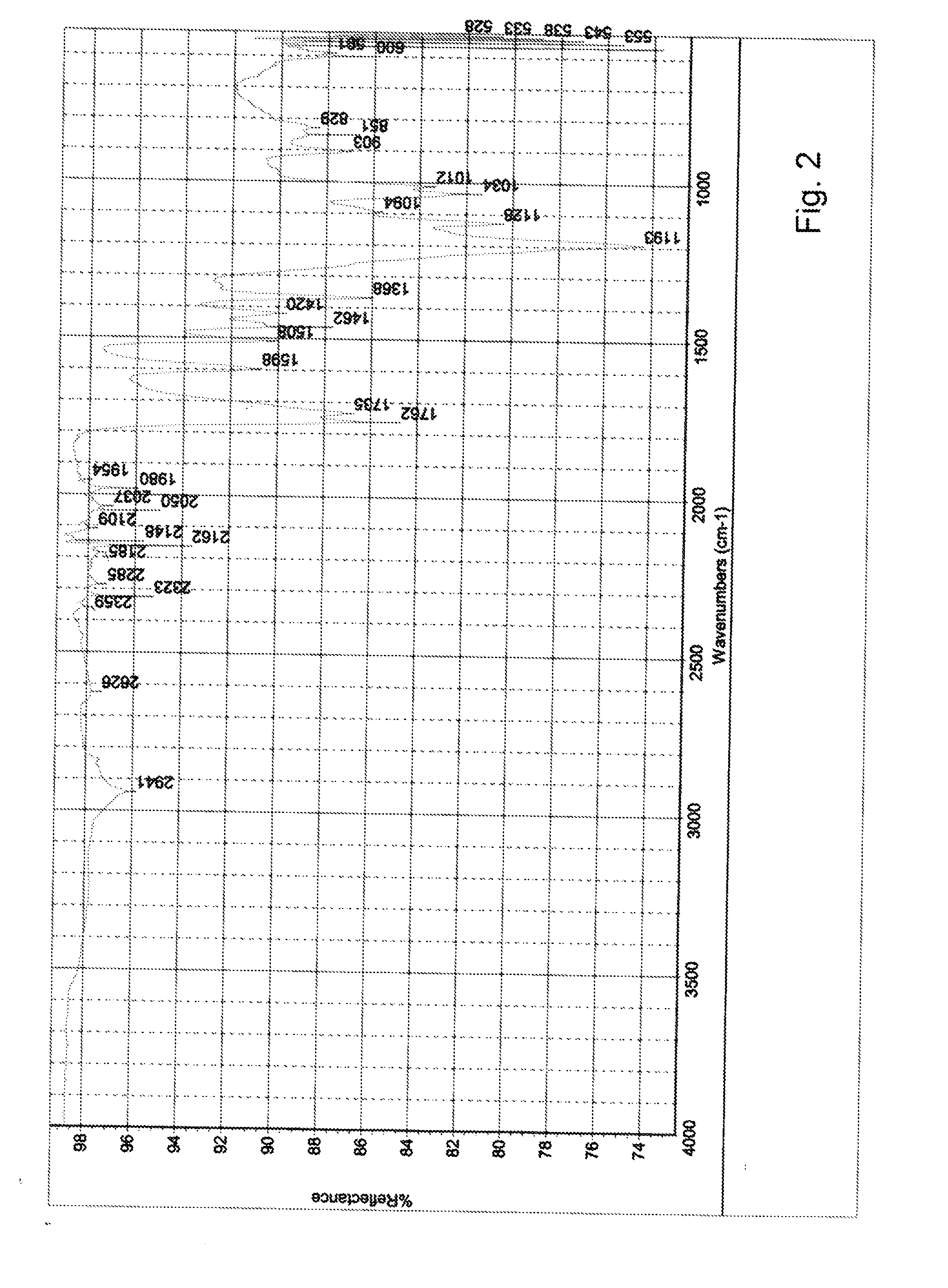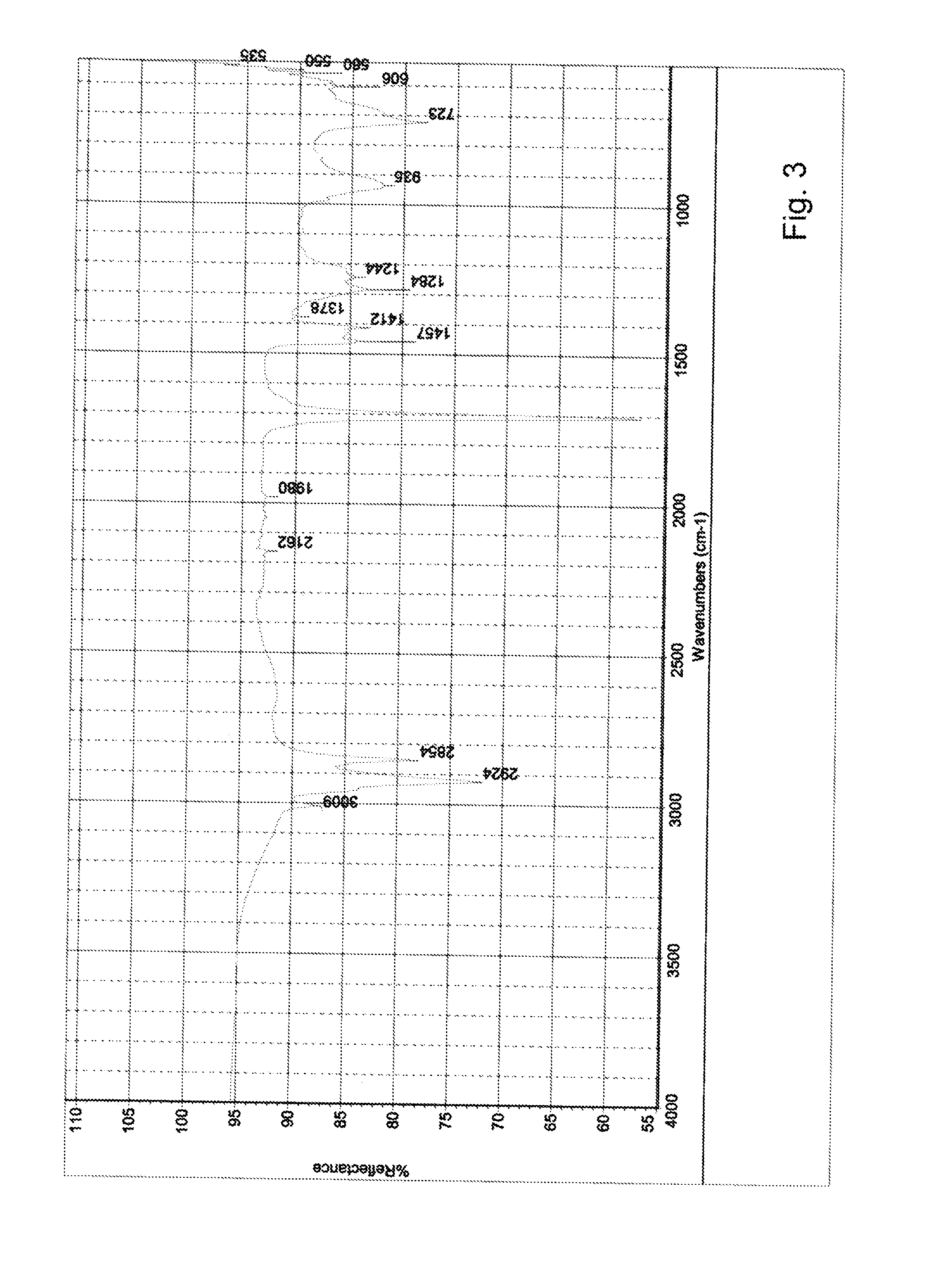Method for esterifying lignin with at least one fatty acid
a technology of lignin and fatty acids, which is applied in the direction of lignin adhesives, adhesive types, coatings, etc., to achieve the effect of reducing water vapour and oxygen transmission rates
- Summary
- Abstract
- Description
- Claims
- Application Information
AI Technical Summary
Benefits of technology
Problems solved by technology
Method used
Image
Examples
example 1
Producing Lignin Esters of Tall Oil Fatty Acids
[0056]In this example lignin esterified with tall oil fatty acids (TOFA) was produced. The following components and their amounts were used:
amountTOFA50gacetylated lignin10gtoluene100ml
[0057]Acetylated lignin and tall oil fatty acids (TOFA) were mixed together and allowed to react in toluene at a temperature of 110° C. Acetic acid formed during the cooking was distilled away from the reaction mixture in order to shift the balance of the reaction to the lignin-fatty acid ester formation. The reaction mixture was cooked for about 30 minutes after which the reaction mixture was allowed to cool. The cooled reaction mixture was mixed with solvent resulting in a sediment or precipitate containing lignin esters of tall oil fatty acids being formed. Then the sediment was purified with repeated washing steps and dried. The formed sediment had a rubbery consistency.
[0058]The analysis results of the sediment by e.g. IR showed that ester bonds were...
example 2
Producing Lignin Esterified with Fatty Acids Present in Suberin
[0060]In this example lignin esterified with fatty acids present in suberin was produced. The suberin used had been isolated from birch bark. The following components and their amounts were used:
amountSuberin5gacetylated lignin10gpyridine100ml
[0061]Acetylated lignin and suberin were mixed together in pyridine and allowed to react at a temperature of about 120° C. Acetic acid formed during the cooking was distilled away from the reaction mixture in order to shift the balance of the reaction to the lignin-fatty acid ester formation. The reaction mixture was cooked for about one hour after which the reaction mixture was allowed to cool. The cooled reaction mixture was poured into water, whereby a light brown precipitate containing lignin esterified with fatty acids present in suberin was formed.
[0062]Then the sediment was purified with repeated washing steps and dried.
[0063]The analysis results of the sediment by e.g. IR sh...
example 3
Producing Lignin Esters of Tall Oil Fatty Acids
[0064]In this example lignin esterified with tall oil fatty acids (TOFA) was produced. The following components and their amounts were used:
amountTOFA100 gacetylated lignin 20 g
[0065]The reaction between acetylated lignin and tall oil fatty acids was carried out in a similar manner as presented in Example 1, except that no solvent was used for carrying out the reaction. The reaction was carried out at a temperature of 125° C. and some acetic acid was distilled away from the reaction mixture.
[0066]The reaction mixture was allowed to cool and then poured into hexane whereby the formed lignin-fatty acid ester was precipitated. The precipitate was washed and dried.
PUM
| Property | Measurement | Unit |
|---|---|---|
| molar ratio | aaaaa | aaaaa |
| temperature | aaaaa | aaaaa |
| molar ratio | aaaaa | aaaaa |
Abstract
Description
Claims
Application Information
 Login to View More
Login to View More - R&D
- Intellectual Property
- Life Sciences
- Materials
- Tech Scout
- Unparalleled Data Quality
- Higher Quality Content
- 60% Fewer Hallucinations
Browse by: Latest US Patents, China's latest patents, Technical Efficacy Thesaurus, Application Domain, Technology Topic, Popular Technical Reports.
© 2025 PatSnap. All rights reserved.Legal|Privacy policy|Modern Slavery Act Transparency Statement|Sitemap|About US| Contact US: help@patsnap.com



